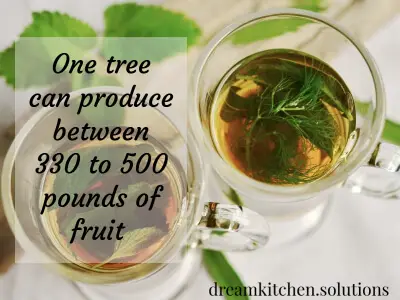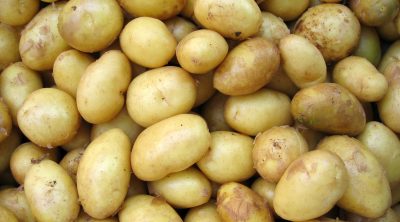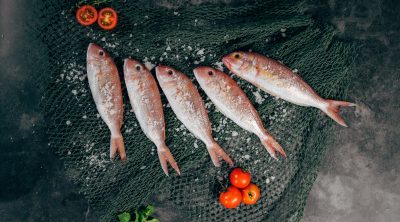If you want to add a fun new ingredient to your diet, you’ll have a tough time beating these nutrient-dense superfoods from Africa. Each of the 5 we’ve selected have highly sought-after properties, are flexible, and steeped in African lore.
We’ll give you background information, nutritional content, and how they should be consumed for maximum benefit.
Contents
Superfood One: Tamarind
Tamarind is grown on enormous trees that can reach a height of 100 feet. The Tamarind itself is a very slow growing fruit that is formed in pods. One tree can produce between 330 to 500 pounds of fruit, and the fruit is shelled and stored in cool, dry environments until it’s ready to be prepared.

Tamarind is native to tropical Africa, and it is known for having a sweet and sour flavor that is highly desirable. This superfood is especially helpful when it comes to restoring electrolytes and staving off dehydration, and it is often served to guests who come in from the heat or who are suffering from a hangover.
The easiest way to make a Tamarind drink is to shell the fruits, allow it to steep in water, add a tablespoon of sugar and serve. If you eat the sticky pulp, you’ll get 13% of your daily dietary fiber intake from 100 grams.
Finally, superstition states that if you put a small amount of Tamarind juice mixed with coconut milk in an infant’s mouth, they’ll grow up to be wise. Additionally, several South African tribes view the Tamarind Tree as sacred and believe it is the home of the rain god.
Superfood Two: Kenkiliba
The leaves from the Kenkiliba shrub are thought to have healing properties and are used as a cure-all. This shrub is native to the Sahel area, and you can often find bags of them being sold alongside the road. It is made into an infusion tea that is thought to balance your digestive system, and to act as a digestive stimulant.
The leaves are packed with nutrients and antioxidants, and West African Muslims traditionally use this tea to break their Ramadan fast. People who drink it regularly also report clearer skin and better overall health.
To make this tea, you begin by getting a kettle and adding eight cups of water and a handful of the Kenkiliba leaves. Cover the pot and boil for 10 to 15 minutes, then remove from the heat and let it steep for an additional 5 to 10 minutes. The last step is straining the tea and serving it hot. Additionally, you can store it in glass bottles.
Superfood Three: Moringa
The Moringa tree is native to both Asia and Africa, and it is most commonly found in the Etosha Reserve in Namibia. Every part of this tree is edible, and it is packed full of nutrients. The bark, flowers, leaves, nuts, tubers, pods, seeds, and roots are all useful for their nutrient content.
Traditionally, the leaves are used either fresh or dried and ground down into a powder that results in a high calcium, protein, iron, Vitamin A, and Vitamin C mix.
This powder has been studied and it was estimated that gram for gram, the Moringa powder had twice the protein of yogurt, seven times the Vitamin C of oranges and over twenty times the iron of spinach (a superfood indeed!).
Today, there are several groups that claim Moringa can be a huge factor in fighting the problem of malnutrition in Africa, especially among young children, nursing mothers, and infants. This tree also comes into its prime state at the end of the dry season, and this makes it a valuable food source as other food sources are usually scarce at that time.
Superfood Four: Teff
Ethiopia and Eritrea have large crops of Teff, which is a fine grain that is loaded with nutrients. This grain stands out for its high calcium content, and a half a cup contains as much calcium as a half a cup of spinach (around 123mg). It is widely believed that if you make your baby’s food using Teff as a base, they’ll grow up to be strong, healthy individuals.
You’ll usually find Teff ground down to a powder and used to make a traditional flatbread called injera. This bread is then used as a plate for stews or roasted meats, and you fold it over and eat it with the roasted meats or stews inside. When you cook this grain on its own, it takes on a mushy texture, and you can also find it in porridge, stews, and polentas.
Superfood Five: Amaranth
Amaranth is found all over Africa, and it grows wild in a variety of terrains. This plant is full of Folic acid, Vitamin C, iron, phosphorus, B Vitamins and protein. You can also eat the seeds for an additional boost of calcium.

To prepare Amaranth, you can cook the leaves until they’re soft and tender and mix them into a porridge-type mixture for a breakfast staple, and they’re widely considered to be gentle enough for weaning babies. You can also dry the leaves and ground them down into a fine flour that is used to make bread. The seeds can be roasted or air popped and mixed into baked goods, desserts, bread, salads, and many patties.
Amaranth has been used for over 3,000 years by various cultures. It was widely considered to be a key piece to religious ceremonies, and there is still a strong belief in the healing capabilities this plant can provide.
These five African superfoods all have very good nutrient counts, and they all have a wide variety of benefits that anyone who eats them can enjoy. They’ll give your body a boost and you don’t have to eat large quantities to get the full benefit. They’re perfect for anyone who is health-conscious, or anyone who wants to add new superfoods to their diets.






